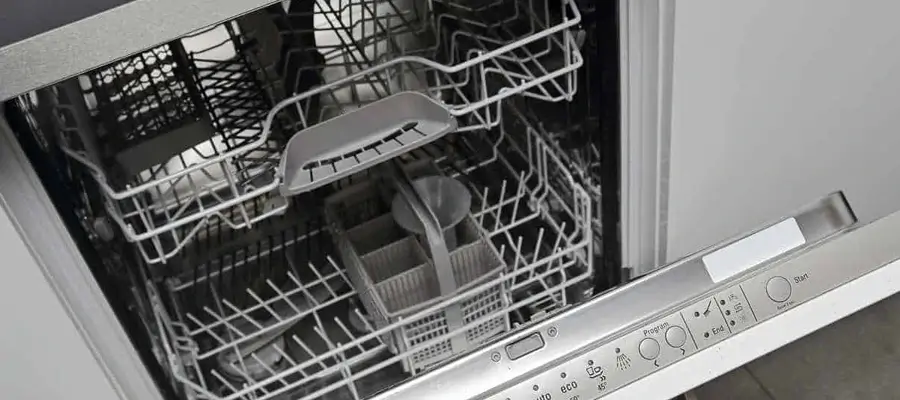How to Troubleshoot a Dishwasher Water Inlet Valve

Guilty as Charged: The Water Inlet Valve
Repair professionals understand that just a few components are responsible for most appliance problems.
With dishwashers, the water inlet valve is always a prime suspect. When your dishwasher goes rogue, expect to find the inlet valve in the subsequent police lineup.
Signs pointing to a faulty inlet valve include:
- Leaks that fill the dishwasher when it’s off.
- Inadequate water for a cycle. The dishwasher fills too slowly or not all.
- A bad inlet valve can lead to leaks from the dishwasher onto the kitchen floor. This is potentially hazardous.
- Most inlet valve malfunctions stem from a defective seal or solenoid failure.
Can You Repair a Dishwasher Water Inlet Valve DIY?
If you’re like most homeowners, you should never attempt a DIY repair on a water inlet valve. It’s not as straightforward as you might think!
- You’ll need the right tools for the job.
- You’ll be working with electrical components, elevating the risk of something going wrong.
- Depending on the brand of dishwasher you own, you may have to strip wires, attach terminals, and fashion a testing cord to check the valve’s electrical components.
- Given these factors, the cheapest, easiest, and safest approach is to hire a professional appliance repair service like West Coast Chief.
A Simple Check for the Inlet Valve
Unless you have an ohmmeter in your tool chest, let’s cut to the chase. It’s time to call the appliance pros who know what they’re doing.
But if you have the right equipment and a working knowledge of appliances, and you’re forging ahead with the DIY repair come hell or high water, here’s how to troubleshoot that pesky water inlet valve.
- Disconnect the dishwasher from power and water supplies.
- Using pliers, gently detach any wires from the inlet valve.
- Attach an ohmmeter to the valve’s terminals. If the meter reads infinity, one of the solenoids has failed.
- But if the reading checks out, inspect the valve for food debris or sediment. Clean any clogs without disassembling the valve.
- If steps 3 and 4 reveal nothing wrong, you’ll need to conduct a more thorough inspection. Or you can call us for service. We’ll be waiting.
Next, a Closer Inspection of the Water Inlet Valve
This second test is significantly more involved than the first “simple” evaluation we outlined.
You’ll be working with electrical components. Are you highly confident in your abilities? Then proceed with the DIY diagnosis; otherwise, call a professional at this point.
1) Detach the dishwasher power supply
Unplug the dishwasher or remove the power source. Turn off the water supply as well.
2) Determine the inlet valve power type
Locate the water inlet valve and look for a sticker or stamp impression on it. These will tell you the valve’s voltage rating and whether it uses AC or DC power.
3) Make a testing cord for AC
Make a test cord out of a power cord, two crimp-on insulated terminals, and a crimping tool for an AC valve. The power cord should have three wires: ground, hot, and neutral.
Strip the insulation off the hot and neutral wires and cut the ground wire to keep it out of the way. Crimp the insulated terminals onto the stripped ends of the hot and neutral wires (one connection per wire).
4) Use a battery pack for DC
For DC power, purchase a 12-volt battery pack with attached wires. Repeat the process outlined in step 3, bearing in mind that the battery pack replaces the power cord.
5) Determine the connection type
Now, examine the valve’s connections. You’ll find two male spade terminals or two small pins.
- With male spade terminals, you can directly connect your test cord or pack.
- With pins, you should cut the wiring harness a few inches from the valve. Strip the ends of all four wires. On one side, crimp two male spade terminals, and on the other, two female spade terminals. This ensures you can test power to the valve and quickly reconnect it to the dishwasher after the test.
Turn on the water supply. Does water leak from the valve even when the dishwasher is without power? If so, replace the water inlet valve immediately. If not, move on to the next step.
6) Test the water inlet valve
Attach your test cord or battery pack to the valve. If water flows freely through it, the inlet valve isn’t causing your dishwasher problems.
But if the water flows slowly or not at all, the inlet valve may need cleaning. And if it’s free of debris yet still restricting water flow, you have a broken valve that must be replaced.
For an Easier & Safer Repair, Call West Coast Chief
It all sounds like such fun! If you love tinkering with electronics and mechanical stuff, then it may be your idea of a good time to spend a Saturday afternoon on the kitchen floor, surrounded by testing equipment and dishwasher parts.
Otherwise, abandon the notion of a DIY water inlet valve repair in the interest of saving a few bucks. Call us at West Coast Chief repair instead. We’ll determine where the problem lies — after all, it may not be the dishwasher water inlet valve, or it may be much more than the inlet valve.
Once we diagnose the malfunction, we’ll offer an affordable solution to meet your budget — repair or replacement, depending on the condition and age of your dishwasher. And in most cases, we’ll have your dishwasher running like a champ by the end of our service call.
1 Comment
Submit a Comment
More Articles
My dishwashers water does not want to fill the machine open the tap but it does not fill the machine at all help please